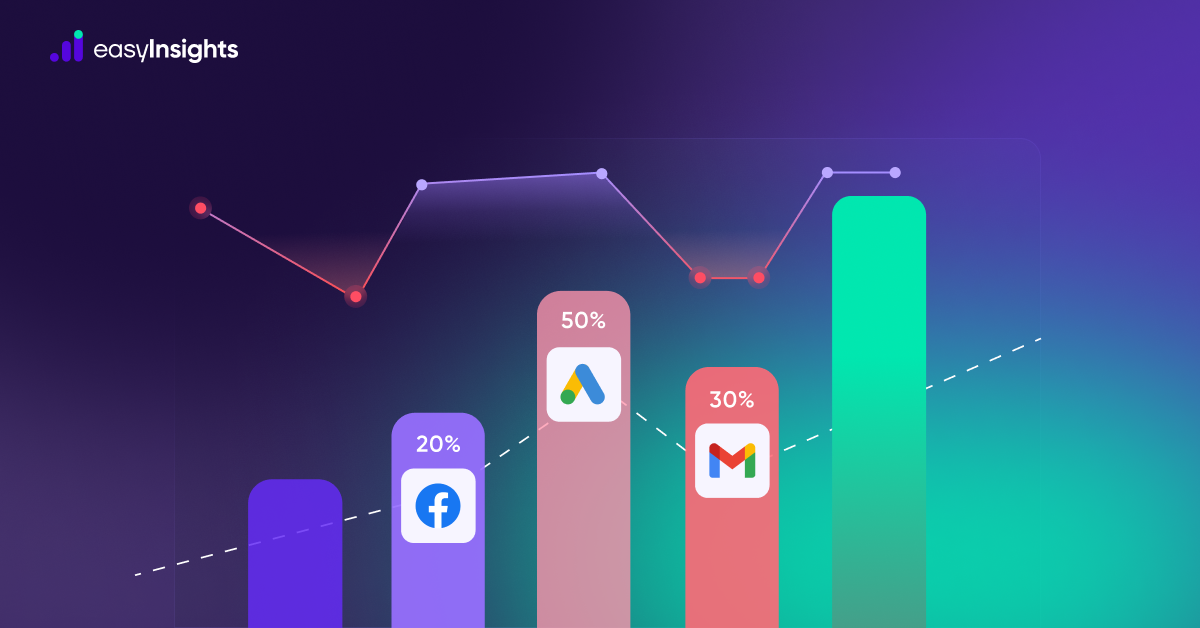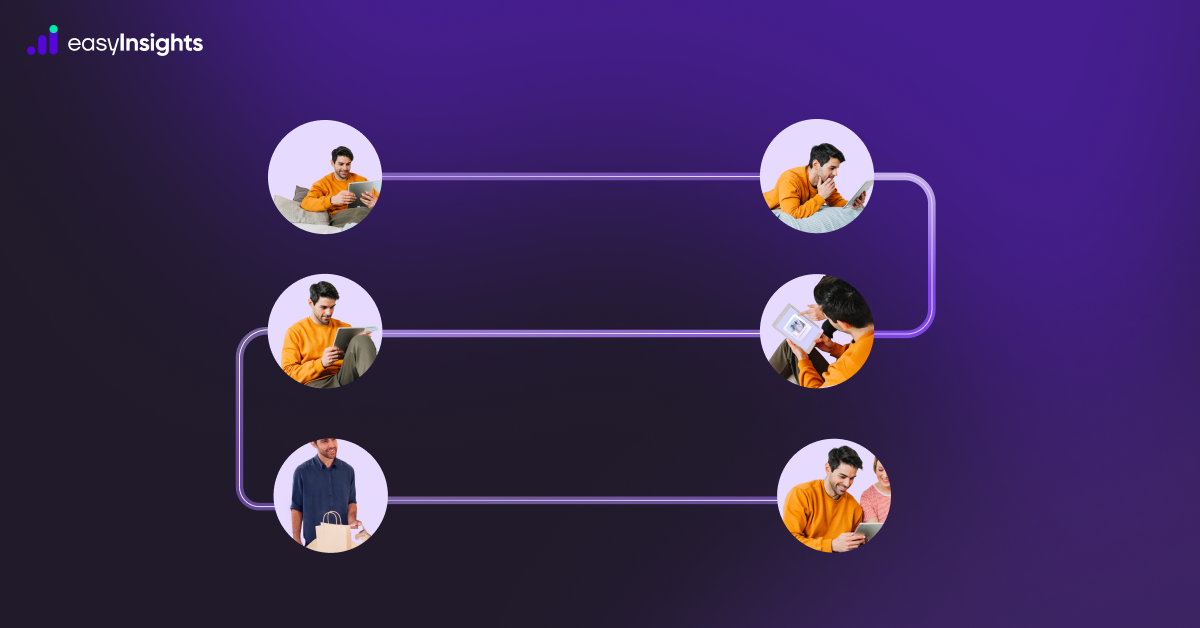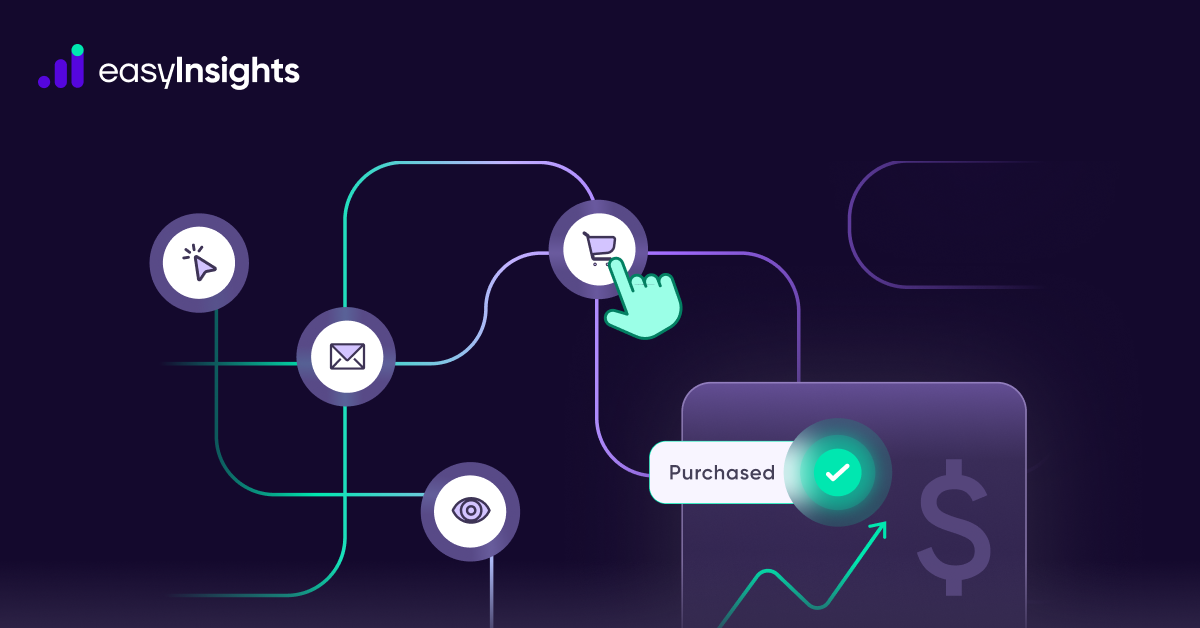
In the world of marketing, attribution models identify and assign credit to the various interactions that contribute to a consumer’s decision to convert (purchase or take a desired action). This helps marketers understand which channels, campaigns, or interactions are most effective in driving conversions. Understanding attribution is crucial because choosing the right model can be complex. These insights are invaluable for optimizing your marketing efforts, revealing new opportunities, and identifying areas for improvement.
Jump ahead to:
Why Attribution Models Matter ?

- Budget Allocation: Helps in allocating marketing budgets more effectively by identifying high-performing channels.
- Performance Optimization: Provides insights into the effectiveness of different marketing strategies.
- Customer Insights: Offers a deeper understanding of customer behavior and preferences.
- ROI Measurement: Assists in measuring the return on investment for various marketing activities.
We’ve established that attribution is crucial for understanding which marketing channels truly drive conversions. Now, let’s delve into the two attribution models available on Google: Last-Click Attribution and Data-Driven.
Additional Read: Top marketing attribution tools and softwares
Last-Click Attribution Models :
Last-click attribution as the name suggests assigns credit for a conversion to the last interaction by a customer before making a purchase. In this model, the entirety of the credit for a conversion is given to the last interaction that the customer engaged with before making a purchase or completing a desired action. It ignores all previous interactions and gives 100% credit to the last one — no matter how long the customer journey. Most platforms, including Google Analytics, use this as their default attribution approach.
Pros of Last-Click Attribution
The last Click Attribution Model provides several benefits for marketers by focusing on the last touchpoint before the conversion. Here are some key benefits
- Simplicity: The Last-Click model is straightforward to grasp and implement since it doesn’t necessitate extensive data analysis or advanced tracking methods.
- Conversion-Focused: Useful for understanding which interactions directly lead to sales or desired actions.
- Broad Industry Support: Numerous analytics and advertising platforms, like Google Analytics and Facebook Ads Manager, support last-click attribution, enhancing its appeal to marketers.
Cons of Last-Click Attribution
Despite its benefits, Last-Click Attribution has inherent limitations:
- Ignores Initial and Middle Interactions: Fails to acknowledge the role of earlier touchpoints in the customer journey.
- Overvalues Final Interaction: This can lead to undervaluing important channels that drive customer engagement and nurturing.
- Incomplete Insight: This does not provide a comprehensive view of the entire customer journey, potentially missing key insights for optimization.
When to Use the Last-Click Attribution Models
Last Click Attribution Model is particularly useful in certain scenarios. Here’s when you should consider using it:
- Limited Resources: For marketing teams with limited resources or technical expertise, the simplicity of last-click attribution is a major perk. Data is readily available in most marketing platforms, requiring minimal setup and analysis. This makes it a user-friendly option for startups or businesses just getting started with attribution.
- Direct Response Campaigns: Campaigns focused on driving immediate actions, such as sales promotions or time-sensitive offers, the Last-Click model can provide clear insights into what drove the final action. It is particularly effective for understanding the final push that led to a conversion.
Additional Read: When to Use Last-Click Attribution in Marketing | EasyInsights
Data-Driven Attribution Models :
Data-driven attribution (DDA) uses advanced algorithms and machine learning to evaluate the impact of each touchpoint in the customer journey, assigning conversion credit based on the actual contribution of each interaction. It works by collecting data from all customer interactions across multiple channels, utilizing machine learning models to analyze patterns and determine the contribution of each touchpoint, and then proportionally distributing conversion credit based on the impact of each touchpoint.
Pros of Data-Driven Attribution Models :
Through data analysis, DDA models can identify patterns and evaluate how each interaction influences the probability of conversion. Compared to traditional last-click attribution, data-driven attribution provides numerous advantages.
- Accuracy: Provides a highly accurate representation of how different interactions contribute to conversions by using real data and advanced algorithms.
- Dynamic Adjustments: Continuously updates the attribution model based on new data, ensuring that insights remain relevant and reflective of current marketing dynamics.
- Comprehensive Analysis: Evaluates all interactions in the customer journey, offering a holistic view of the marketing efforts and their effectiveness.
- Unbiased Credit Distribution: Eliminates the inherent biases present in rule-based models by relying on data-driven insights.
- Optimization Opportunities: Identifies high-performing channels and interactions, enabling marketers to allocate resources more effectively and optimize campaigns for better ROI.
- Adaptability: Adapts to changes in consumer behavior and market conditions, ensuring that the attribution model remains relevant over time.
Cons of Data-Driven Attribution:
Despite its advantages in providing a nuanced understanding of how different marketing efforts contribute to conversions, the Data-Driven Attribution Model has several inherent limitations. Let’s delve into these limitations in more detail:
- Transparency Challenges: The intricate nature of the algorithms can obscure how attribution credit is distributed, posing potential transparency issues for marketers.
- Data Dependency: Data-driven attribution (DDA) models require a significant volume of conversion data to generate reliable and actionable insights. This prerequisite can disadvantage smaller businesses or campaigns with lower conversion rates, as they may not generate sufficient data to effectively train the model using the default data-driven methodology.
When to Use the Data-Driven Attribution Models
To make the most of the Time Decay Attribution Model, marketers should adopt best practices that enhance its advantages while addressing potential limitations:
- Complex Customer Journeys: When your customer journey includes numerous touchpoints across different channels, like digital advertisements, email promotions, social media engagements, and offline interactions. For instance, an e-commerce platform could employ DDA to analyze the impact of online browsing behaviors, customer feedback interactions, and loyalty program engagements on purchasing decisions.
- Advanced Analytics Capabilities: With access to substantial volumes of high-quality data from multiple channels, DDA excels in generating precise insights. For instance, a telecommunications company utilizing sophisticated data analytics across web interactions, mobile app usage, and customer service touchpoints can effectively leverage DDA to optimize service offerings and customer engagement strategies.
Comparison: Last-Click vs Data-Driven
| Feature | Last-Click Attribution | Data-Driven Attribution |
| Simplicity | High | Low |
| Consideration of Touchpoints | Single (Last) | Multiple (All) |
| Implementation | Easy | Complex |
| Accuracy | Low (Ignores early touchpoints) | High (Considers all interactions) |
| Data Requirement | Low | High |
| Best for | Short sales cycles, Beginners | Complex journeys, Advanced users |
Additional Read: First Party Data: The Answer to Third Party Cookie Loss
How to Choose the Right Attribution Model
Choosing the right model depends on your marketing maturity, sales cycle, and data availability.
- Use Last-Click Attribution if:
- You’re a startup or just getting started with attribution.
- Your campaigns focus on immediate conversions (e.g., flash sales).
- You need quick, simple insights with minimal setup.
- Use Data-Driven Attribution if:
- You have a long or complex customer journey.
- You’re running campaigns across multiple channels.
- You have access to high-quality, large-scale data.
- You want to optimize full-funnel performance, not just the end of it.
- Pro Tip: Start with last-click, and as your data maturity grows, move to a data-driven model for deeper insights.
EasyInsights: Your Attribution Solution
Navigating attribution complexity doesn’t have to be hard. EasyInsights.ai helps you unlock the full potential of your marketing data with:
- First-party server-side tracking for accurate attribution
- Composable CDP to unify your customer journey data
- Custom attribution models tailored to your business goals
- Real-time insights that go beyond basic dashboards
As third-party cookies phase out, your attribution strategy must evolve. EasyInsights future-proofs your performance measurement with a privacy-first, data-rich approach.
Conclusion
Choosing the right attribution model isn’t just a technical decision — it’s a strategic one that can significantly impact how you allocate budgets, measure performance, and scale growth. While Last-Click Attribution offers simplicity and quick insights, Data-Driven Attribution provides a more accurate, holistic view of the customer journey.
As privacy standards evolve and consumer paths become increasingly complex, relying solely on last-click data can lead to missed opportunities. Brands that invest in more comprehensive attribution models — backed by first-party data and robust analytics — are better positioned to optimize campaigns, improve ROI, and build long-term customer relationships.
With tools like EasyInsights, you don’t have to choose between ease and effectiveness. You can start simple and scale as your data strategy matures.
Book a demo with EasyInsights today!








